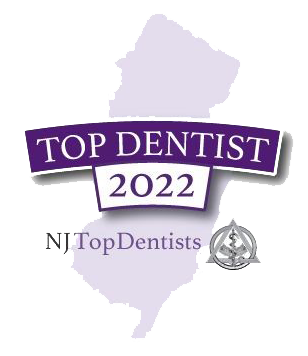
How to Tell a TMJ-Related Headache from a Migraine

Migraine disease and TMJ disorders (TMD) can coexist, and one may worsen the other, but sometimes the culprit behind that migraine-like headache is your jaw joint. The treatments for these often-debilitating conditions differ, which is why it’s essential to understand the reason your head is throbbing. Our TMJ dentists in New Jersey specialize in neuromuscular dentistry and can help alleviate your headaches.
What is a TMJ Disorder?
TMD is a collective term for the array of clinical problems caused by issues with the temporomandibular joints (TMJ). The TMJ hinges your jaw to your skull, allowing you to chew, talk and yawn. The supporting TMJ muscles are under the jaw, in the cheeks, on top of the jaw and the sides of the head. Headaches can emanate from this area because the jaw muscles tighten when you grind or clench your teeth and that tightness travels to other places in the skull.
TMJ-related headaches are often considered tension-type headaches, but in severe cases, they mimic migraine attacks. TMD can lead to referred pain in the ears, neck, shoulders, sinuses, teeth and other areas that may seem unrelated until you meet with our dentists.
Your headache might be caused by TMD if:
- You have recurring pain in one or more regions of your head.
- Jaw movements precipitate the pain.
- You have difficulty or pain chewing tough food.
- You have a limited range of motion opening your jaw.
- You hear a noise from one or both of the TMJs when you move your jaw.
- One or both of your TMJs are tender to the touch.
- Your headaches resolve within three months of TMD treatment.
TMD diagnosis and treatment are complex, but an estimated one in 10 people have TMJ pain, and the headaches caused by the disorder are often mistaken for migraine disease.
What is Migraine?
Migraine is a class of primary headaches that vary in symptoms, severity and treatment. A primary headache disorder is not caused by another condition, so a TMJ-related headache is a separate entity. They are typically foreshadowed by an aura that alters your vision with flashing lights, blurred images or wavy lines, and migraines typically come with sensitivity to lights, sounds and smells. Physical activity as simple as bending over can make a migraine attack unbearable. People with episodic migraines experience head pain for less than 15 days a month, while chronic patients may experience them for 15 or more, sometimes every day for years.
The true causes of TMD and migraine disease are unknown, and diagnosis can be complicated. If you haven’t responded to typical migraine medications and experience symptoms of TMD, your jaw joints may be to blame.
Schedule a Neuromuscular Evaluation with a TMJ Dentist
Head pain can be more than a nuisance and impact every area of your life. Contact the Headache & TMJ Center of New Jersey to determine if a TMJ Disorder is behind your headaches.

